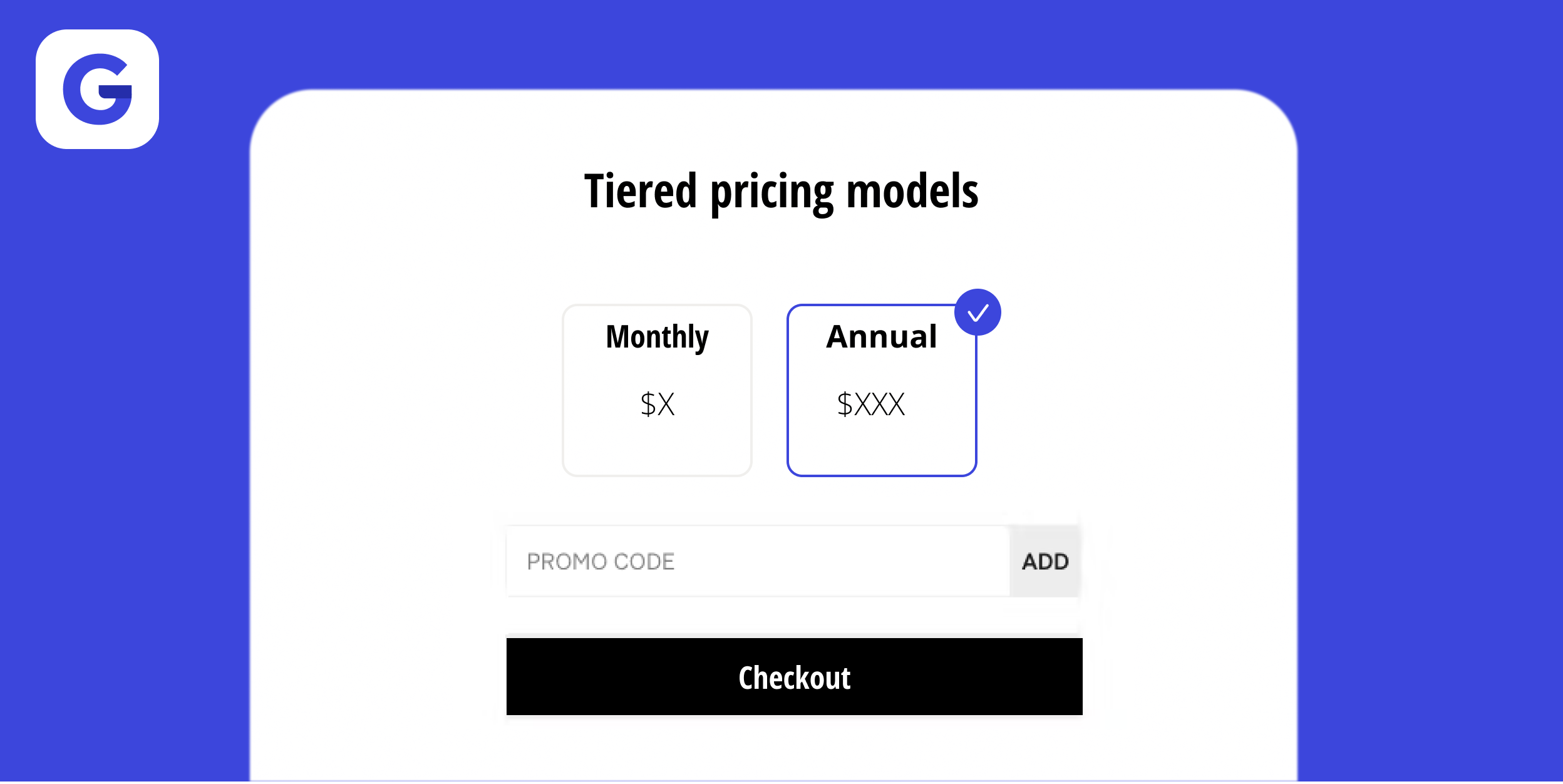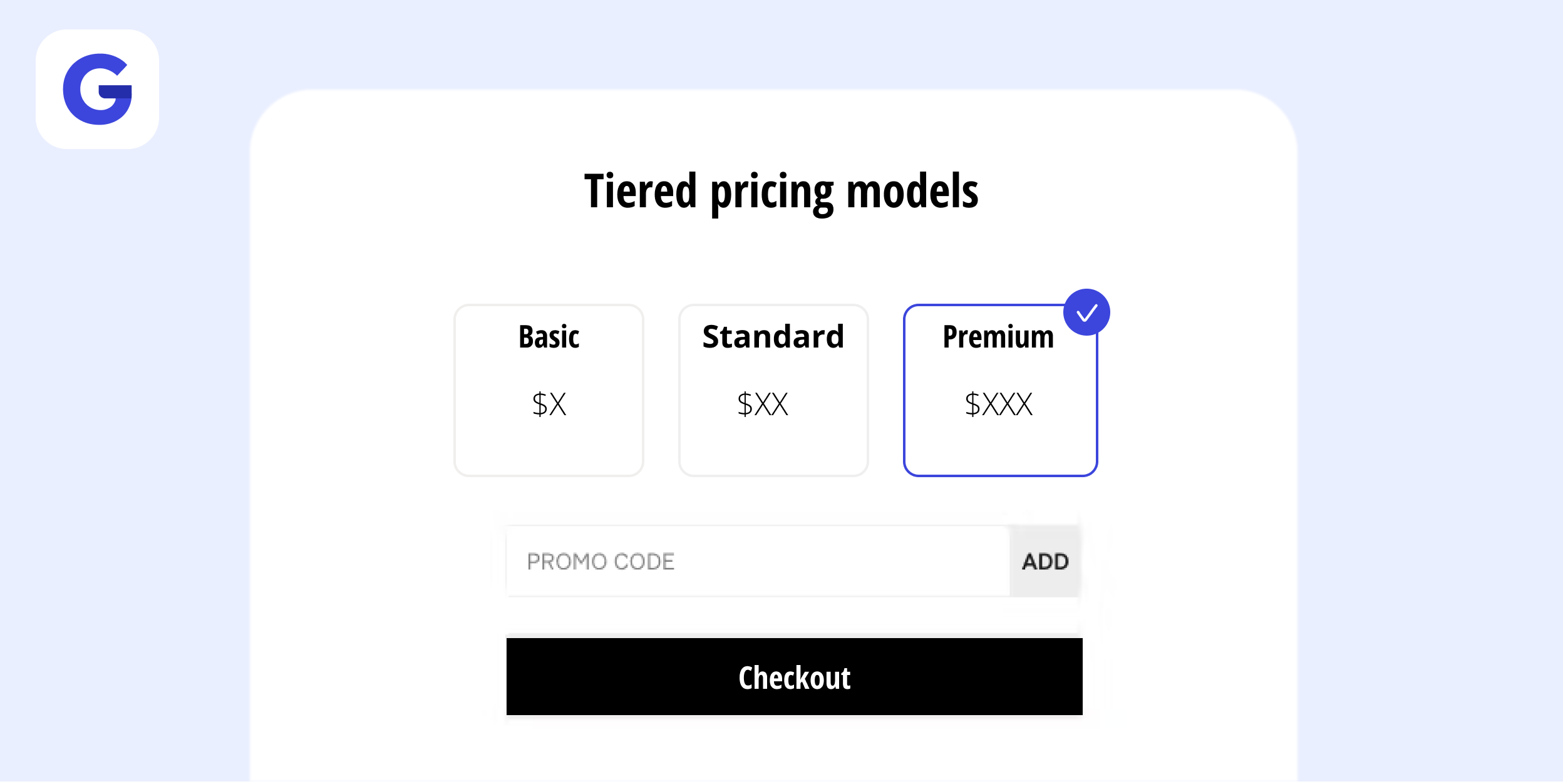
Payment Acceptance for Businesses
In today's fast-paced and digital world, businesses need to stay ahead of the curve when it comes to accepting payments. Offering multiple payment options is no longer a luxury but a necessity for any successful business. Whether you're a brick-and-mortar store or an online retailer, understanding payment acceptance and setting up the right systems can make a significant difference in your bottom line. In this blog post, we will explore the importance of payment acceptance for businesses and wh
by Growpay
In today's fast-paced and digital world, businesses need to stay ahead of the curve when it comes to accepting payments. Offering multiple payment options is no longer a luxury but a necessity for any successful business. Whether you're a brick-and-mortar store or an online retailer, understanding payment acceptance and setting up the right systems can make a significant difference in your bottom line.
In this blog post, we will explore the importance of payment acceptance for businesses and why offering multiple payment options is essential. We will guide you through the process of setting up payment acceptance for your business, from assessing your needs to choosing the right payment processor and setting up your payment system.
We will also dive into the various types of payment methods that businesses can accept, including cash, checks, credit and debit cards, mobile and digital wallets, and online payments. Understanding the pros and cons of each method will help you make informed decisions that align with your business goals.
Managing payment acceptance goes beyond just accepting payments. It involves understanding fees and rates, handling chargebacks and disputes, maintaining security and compliance, and effectively managing sales and transaction records. We will provide you with practical tips and strategies to navigate these areas successfully.
Furthermore, we will explore how businesses can optimize payment acceptance for growth. This includes expanding payment options to cater to a wider customer base, leveraging payment analytics to gain insights into customer behavior and preferences, and improving payment processes to enhance customer satisfaction.
By the end of this blog post, you will have a comprehensive understanding of payment acceptance for businesses and the steps you can take to ensure a smooth and efficient payment experience for your customers. So, let's dive in and unlock the potential of payment acceptance for your business!
Understanding Payment Acceptance: Why Businesses Should Offer Multiple Payment Options
Customers today have increasingly diverse preferences when it comes to making payments. Offering multiple payment options is crucial for businesses to cater to these preferences and maximize their revenue potential. Let's explore the key reasons why businesses should prioritize and understand payment acceptance.
1. Meeting Customer Expectations
Customers expect convenience and flexibility when it comes to making payments. By offering multiple payment options, businesses can meet these expectations and provide a seamless checkout experience. Whether it's paying with cash, using a credit card, or utilizing mobile payment methods, businesses that cater to diverse payment preferences are more likely to attract and retain customers.
2. Expanding Customer Base
Not all customers have the same preferred payment method. Some may prefer using cash, while others rely solely on digital transactions. By offering a variety of payment options, businesses can appeal to a broader audience and capture the attention of potential customers who may have otherwise chosen a competitor that offers their preferred payment method. This expansion of the customer base can lead to increased sales and business growth.
3. Enhancing Customer Trust and Confidence
When customers have the freedom to choose their preferred payment method, they are more likely to trust the business they are transacting with. Offering secure and reliable payment options instills confidence in customers, reassuring them that their personal and financial information will be protected. This trust can foster long-term customer relationships and encourage repeat business.
4. Improving Cash Flow and Speeding Up Transactions
Accepting multiple payment options can significantly improve cash flow for businesses. By providing customers with various ways to pay, businesses can reduce the likelihood of missed sales opportunities due to limited payment options. Additionally, certain payment methods, such as contactless payments or mobile wallets, can expedite the checkout process, leading to faster transactions and increased customer satisfaction.
5. Staying Competitive in the Market
In today's competitive landscape, businesses need to differentiate themselves from their competitors. Offering a wide range of payment options can be a unique selling point that sets businesses apart. When customers have multiple choices for making payments, they are more likely to choose a business that aligns with their preferences. By staying ahead of the curve and offering innovative payment methods, businesses can gain a competitive edge and position themselves as industry leaders.
In conclusion, understanding payment acceptance and offering multiple payment options is vital for businesses in today's market. By meeting customer expectations, expanding the customer base, enhancing trust, improving cash flow, and staying competitive, businesses can unlock significant advantages and pave the way for success. In the next section, we will delve into the process of setting up payment acceptance for your business.
How to Set Up Payment Acceptance for Your Business
Setting up payment acceptance for your business requires careful planning and execution. In this section, we will guide you through the step-by-step process to ensure a smooth and efficient setup.
Assessing Your Business Needs
Before diving into the technical aspects of payment acceptance, it's essential to assess your business needs and objectives. Consider the following factors:
- Volume of transactions - Determine the average number of transactions your business processes daily, weekly, or monthly. This will help you understand the scale of your payment acceptance requirements.
- Types of customers - Identify your target audience and their preferred payment methods. Are they more likely to use cash, credit cards, or digital wallets? Understanding your customers' preferences will guide your decision-making process.
- Integration with existing systems - Evaluate the compatibility of your payment acceptance system with your existing point-of-sale (POS) systems, e-commerce platforms, or other software solutions. Seamless integration is crucial for efficient operations.
- Security and compliance - Consider the security measures required to protect customer data and comply with industry regulations, such as Payment Card Industry Data Security Standard (PCI DSS) compliance. Prioritize security to build trust with your customers.
Choosing a Payment Processor
Once you have assessed your business needs, the next step is to choose a payment processor that aligns with your requirements. Consider the following factors when evaluating payment processors:
- Fees and pricing structure - Understand the fees associated with each payment processor, including transaction fees, monthly fees, setup fees, and any additional charges. Compare pricing structures to determine the most cost-effective option for your business.
- Accepted payment methods - Ensure that the payment processor supports the payment methods you want to offer to your customers. Whether it's credit cards, debit cards, mobile wallets, or online payment gateways, verify that the processor supports the necessary options.
- Integration options - Assess the ease of integration with your existing systems. Look for payment processors that offer seamless integration with your POS systems, e-commerce platforms, or other software solutions.
- Security measures - Evaluate the security measures provided by the payment processor, such as encryption, tokenization, and fraud detection. Robust security features are crucial to protect customer data and minimize the risk of fraudulent activities.
- Customer support and reliability - Consider the level of customer support offered by the payment processor. Prompt and reliable support can be crucial in resolving any payment-related issues that may arise.
Setting Up Your Payment System
Once you have selected a payment processor, it's time to set up your payment system. Follow these steps to ensure a smooth setup process:
- Gather necessary documentation - Prepare the required documentation, such as business registration details, tax identification numbers, and bank account information. Some payment processors may require additional documentation, so be prepared to provide any requested information.
- Create an account - Sign up for an account with the chosen payment processor. Provide all the necessary information during the registration process.
- Configure payment settings - Customize your payment settings based on your business requirements. Set up the accepted payment methods, currencies, and any additional options provided by the payment processor.
- Integrate with your systems - Connect your payment processor with your existing systems, such as your POS system or e-commerce platform. Follow the integration instructions provided by the payment processor, or seek assistance from their support team if needed.
- Test transactions - Before going live, conduct test transactions to ensure that the payment system is functioning correctly. Verify that payments are processed accurately and that transaction data is recorded accurately in your systems.
- Train your staff - Provide training to your staff on how to use the payment system effectively. Educate them on processing payments, handling refunds or exchanges, and troubleshooting any payment-related issues that may arise.
By following these steps, you can successfully set up payment acceptance for your business. In the next section, we will explore the various types of payment methods that businesses can accept.
Types of Payment Methods Businesses Can Accept
Businesses have a wide range of payment methods to choose from, depending on their industry, customer preferences, and operational requirements. In this section, we will explore the various types of payment methods that businesses can accept.
Cash and Checks
- Cash - Accepting cash is the most traditional form of payment. It is widely used and accepted in nearly all industries. Cash payments provide immediate funds and are not subject to processing fees. However, handling cash carries certain risks, such as theft and counterfeit bills.
- Checks - While less common than in the past, some businesses still accept checks as a form of payment. Checks provide customers with the convenience of paying without cash and offer a paper trail for record-keeping. However, checks can be time-consuming to process, and there is a risk of bounced or fraudulent checks.
Credit and Debit Cards
- Credit Cards - Accepting credit cards allows customers to make payments using borrowed funds. Credit card transactions are processed electronically, providing quick and secure payment processing. Businesses can partner with credit card companies, such as Visa, Mastercard, or American Express, to accept various credit card brands.
- Debit Cards - Debit cards allow customers to make payments directly from their bank accounts. Debit card transactions are processed similarly to credit cards, providing convenience and security. Popular debit card networks include Visa Debit, Mastercard Debit, and Maestro.
Mobile and Digital Wallets
- Mobile Wallets - Mobile wallets, such as Apple Pay, Google Pay, and Samsung Pay, enable customers to make payments using their smartphones or other mobile devices. These wallets securely store credit card, debit card, or bank account information, allowing for quick and contactless payments.
- Digital Wallets - Digital wallets, like PayPal, Apple Pay, and Square provide customers with a convenient way to make online payments. Users can link their bank accounts or credit cards to these digital wallets, ensuring secure transactions. Some digital wallets also offer in-person payment options through QR codes or near-field communication (NFC) technology.
Online Payments
- Payment Gateways - Payment gateways, such as Stripe, PayPal, or Adyen, enable businesses to accept online payments securely. These gateways facilitate the transfer of funds between customers and businesses, often integrating with e-commerce platforms or websites.
- Cryptocurrencies - Cryptocurrency payment gateways such as Coinbase allow businesses to accept cryptocurrencies, like Bitcoin or Ethereum, as a form of payment. Cryptocurrencies provide a decentralized and secure method of payment, but they may be subject to price volatility and require additional setup and processing considerations.
It's important for businesses to consider the pros and cons of each payment method and choose the ones that align with their customers' preferences and operational requirements. Offering a diverse range of payment options can enhance customer satisfaction and increase sales. In the next section, we will delve into the management aspects of payment acceptance, including fees, chargebacks, security, and record-keeping.
How to Manage Payment Acceptance
Managing payment acceptance is a crucial aspect of running a successful business. It involves handling fees and rates, managing chargebacks and disputes, maintaining security and compliance, and effectively managing sales and transaction records. In this section, we will delve into each of these areas and provide practical tips for managing payment acceptance.
Understanding Fees and Rates
- Payment Processor Fees - Familiarize yourself with the fees charged by your payment processor. These may include transaction fees, monthly fees, setup fees, and additional charges for specific services or features. Understand the pricing structure and negotiate rates if possible to ensure the most cost-effective solution for your business.
- Interchange Fees - Interchange fees are charged by credit card companies and are a percentage of each transaction. These fees vary based on factors such as card type, transaction type, and industry. Understanding interchange fees can help you assess the cost of accepting different credit cards and make informed decisions.
- Currency Conversion Fees - If your business operates internationally or accepts payments in multiple currencies, be aware of currency conversion fees. These fees are charged when converting one currency to another and can impact the overall cost of accepting payments.
Handling Chargebacks and Disputes
- Chargeback Prevention - Implement measures to prevent chargebacks, such as clear communication with customers, accurate product descriptions, and prompt order fulfillment. Resolving customer issues before they result in chargebacks can help maintain positive relationships and reduce potential financial losses.
- Chargeback Management - Develop a clear process for managing chargebacks when they do occur. Familiarize yourself with the chargeback policies of your payment processor and respond promptly to any notifications. Keep detailed records of transactions, communication with customers, and any evidence that can support your case in the event of a dispute.
Maintaining Security and Compliance
- PCI DSS Compliance - Payment Card Industry Data Security Standard (PCI DSS) compliance is essential for businesses that handle credit card information. Understand the requirements and ensure that your payment systems and processes meet the necessary security standards to protect customer data and reduce the risk of data breaches.
- Data Encryption - Implement encryption measures to secure customer payment data during transmission and storage. This adds an extra layer of protection against unauthorized access and ensures compliance with data security regulations.
- Fraud Detection and Prevention - Utilize fraud detection tools and services provided by your payment processor to identify and prevent fraudulent transactions. Implement measures such as address verification, card security codes, and transaction velocity monitoring to minimize the risk of fraudulent activities.
Managing Sales and Transaction Records
- Robust Record-Keeping - Maintain accurate and detailed records of all sales and transactions. This includes information such as transaction dates, amounts, customer details, and payment methods used. Robust record-keeping facilitates reconciliation, customer support, and financial analysis.
- Reconciliation and Reporting - Regularly reconcile your payment records with your financial statements to ensure accuracy and identify any discrepancies. Generate reports from your payment processor or accounting software to analyze sales trends, payment methods, and other relevant metrics.
By effectively managing payment acceptance, businesses can optimize their financial operations, minimize risks, and provide a secure and seamless payment experience for their customers. In the next section, we will explore strategies to optimize payment acceptance for growth.
How to Optimize Payment Acceptance for Growth
To drive growth and maximize the potential of payment acceptance, businesses should focus on optimizing their payment processes. In this section, we will explore strategies to expand payment options, leverage payment analytics, and improve payment processes for enhanced customer satisfaction.
Expanding Payment Options
- Research Customer Preferences - Continuously monitor and analyze customer preferences to identify emerging payment methods. Stay updated with industry trends and customer demands to ensure you offer the most relevant and desired payment options.
- Evaluate New Payment Technologies - Stay informed about emerging payment technologies, such as contactless payments, biometric authentication, or blockchain-based solutions. Assess the feasibility and potential benefits of adopting these technologies to enhance customer convenience and stay ahead of competitors.
- Partner with Payment Aggregators - Consider partnering with payment aggregators, such as Square, Stripe, or PayPal, to expand your payment capabilities and reach a broader customer base. These aggregators offer diverse payment options and streamline the integration process, making it easier for businesses to accept payments across multiple channels.
Leveraging Payment Analytics
- Collect and Analyze Payment Data - Utilize payment analytics tools provided by your payment processor or payment orchestration platform to gain insights into customer behavior, transaction patterns, and payment preferences. Analyze data such as transaction volumes, average order values, and popular payment methods to inform business decisions and optimize your payment strategies.
- Identify Opportunities for Upselling and Cross-Selling - Analyze payment data to identify opportunities for upselling or cross-selling. For example, if customers frequently purchase certain products, consider offering related items or promotional bundles during the payment process to increase average order values.
- Personalize the Payment Experience - Utilize payment analytics to personalize the payment experience for your customers. For instance, offer saved payment information, personalized recommendations, or loyalty rewards during the checkout process to enhance customer satisfaction and encourage repeat purchases.
Improving Payment Processes for Customer Satisfaction
- Streamline the Checkout Process - Simplify and streamline the checkout process to minimize friction and increase conversion rates. Optimize the design of your payment pages, reduce the number of steps required to complete a transaction, and offer guest checkout options to accommodate both new and returning customers.
- Enhance Mobile Payment Experience - With the increasing prevalence of mobile commerce, ensure that your payment processes are mobile-friendly. Optimize your website or mobile app for mobile payments, implement responsive design, and enable seamless mobile wallet integrations to provide a smooth and convenient checkout experience.
- Provide Transparent Pricing and Policies - Clearly communicate your pricing, refund policies, and any additional fees associated with transactions. Transparency builds trust and reduces customer dissatisfaction or confusion during the payment process.
- Offer Reliable Customer Support - Provide accessible and responsive customer support channels to assist customers with payment-related inquiries or issues. Offer multiple support options, such as live chat, email, or phone, and ensure prompt resolution of any payment-related concerns.
By optimizing payment acceptance for growth, businesses can increase sales, improve customer satisfaction, and stay competitive in the market. Continuously evaluate and refine your payment strategies to adapt to changing customer needs and emerging technologies. With a seamless and efficient payment process, businesses can unlock their full potential and drive sustainable growth.
About Growpay
Growpay is an online marketplace, helping simplify payment discovery for businesses worldwide. For more information, visit www.growpay.co.
Relevant Articles

Understanding Subscription Billing Solutions
Subscription billing has become increasingly popular in recent years, with more and more businesses adopting this model to offer their products or services. From streaming platforms to software companies, subscription-based business models have proven to be successful and profitable. However, managing subscription billing can be complex and time-consuming without the right solution in place. In this blog post, we will dive deep into the world of subscription billing solutions and explore why bu

Why Businesses Need Recurring Billing Software in 2024
In today's fast-paced business environment, businesses are constantly looking for ways to optimize their processes and improve their bottom line. One area where efficiency can be greatly enhanced is in billing and payment management. Recurring billing software offers a powerful solution for businesses that have recurring revenue streams, such as subscription-based services or membership programs. With the ability to automate invoicing, manage subscriptions, and integrate with multiple payment g

What is a Payment Gateway and Why Your Business Needs One
Any business that accepts cashless transactions needs a payment gateway. A payment gateway is a tool that captures card information and securely transfers payment data from a customer to the acquirer, and then transfers the payment acceptance or decline back to the customer. If approved, the funds transfer to your business account. Why do you need a payment gateway? A payment gateway is necessary to validate a customer’s card details securely, ensuring funds are available for the purchase — s